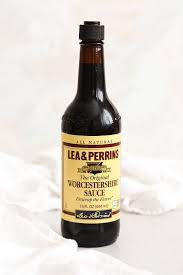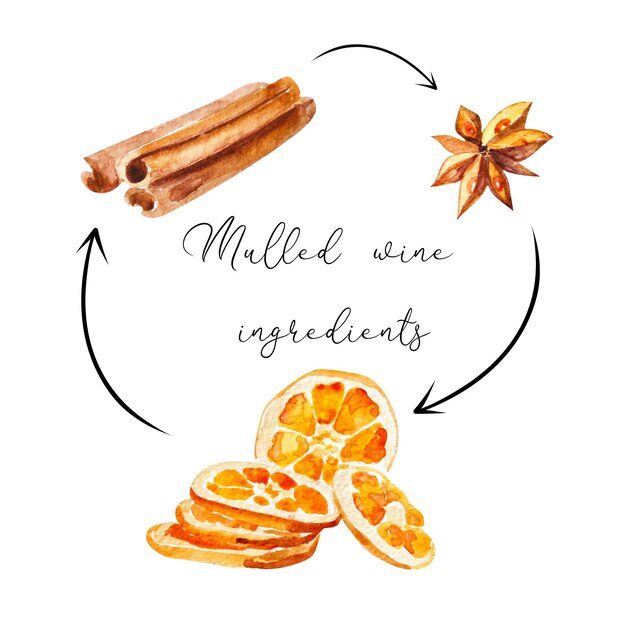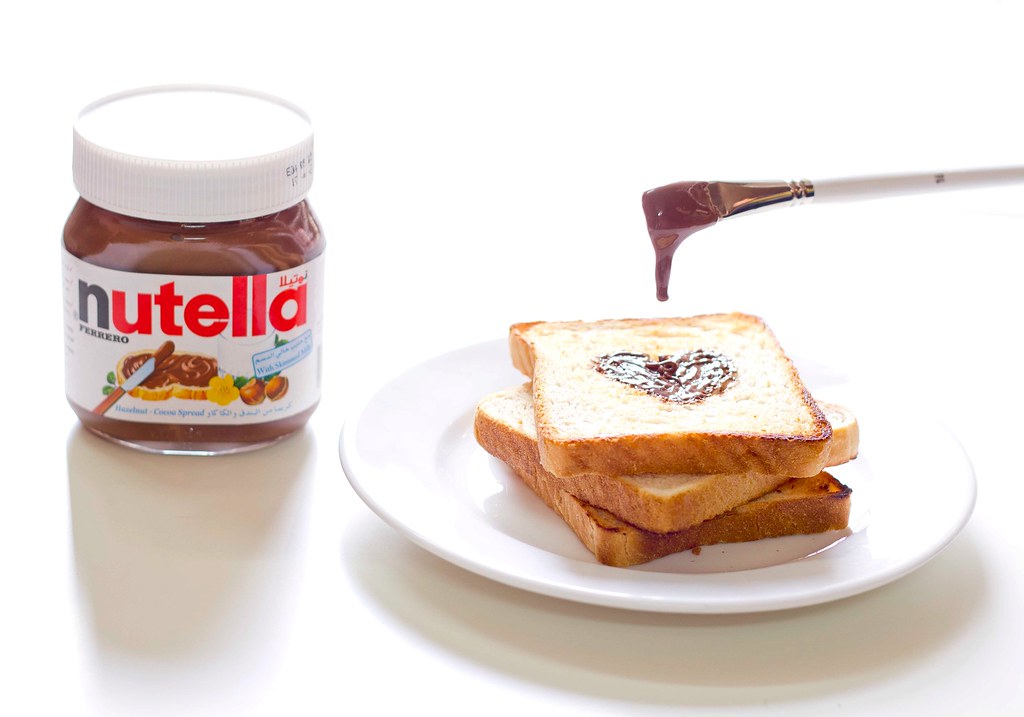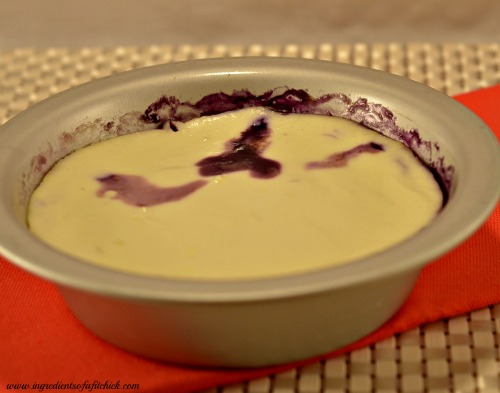Can You Enjoy is Worcestershire Sauce Gluten free on a Gluten-Free Diet?
If you have celiac disease or a gluten sensitivity, you know how important it is to avoid foods that contain gluten. Worcestershire sauce is a popular condiment that is commonly used in cooking and as a flavor enhancer, but is it gluten free? In this article, we will explore whether or not Worcestershire sauce contains gluten and if it is safe for those on a gluten-free diet.
Worcestershire sauce is made from a combination of ingredients including vinegar, molasses, anchovies, and various spices. The sauce is typically aged for several months to develop its unique flavor profile. While Worcestershire sauce is often considered gluten free, it can sometimes contain trace amounts of gluten due to cross-contamination during the manufacturing process.
If you are following a strict gluten-free diet, it is important to read the labels of Worcestershire sauce carefully. Look for sauces that are specifically labeled as gluten free or are certified gluten free by a trusted organization. These sauces have been tested and meet the strict guidelines set forth for gluten-free products. It is also worth noting that there are some brands that offer gluten-free Worcestershire sauce alternatives.
What is Worcestershire Sauce?
Worcestershire sauce is a popular sauce that originated in Worcester, England. It is a fermented liquid condiment made from a variety of ingredients, including vinegar, molasses, sugar, salt, onions, garlic, tamarind, cloves, and various spices. The exact recipe for Worcestershire sauce is typically a closely guarded secret, with each manufacturer having its own unique blend of ingredients.
Worcestershire sauce has a complex and savory flavor profile, with a combination of sweet, tangy, and umami notes. It is often described as having a slightly tangy and slightly spicy taste. The sauce is typically used as a flavor enhancer in cooking, adding depth and richness to a wide range of dishes.
History of Worcestershire Sauce
Worcestershire sauce was first created by two chemists named John Wheeley Lea and William Henry Perrins in the early 19th century. The exact circumstances of its creation are uncertain, but legend has it that Lea and Perrins were trying to recreate a sauce they had tasted in India.
After experimenting with various ingredients and fermentation methods, Lea and Perrins created a sauce that they found to be unpalatable. They set the sauce aside in a barrel and forgot about it for several months. When they rediscovered the sauce, they found that it had developed a rich and complex flavor that they found delicious.
Lea and Perrins began selling their Worcestershire sauce commercially in 1837, and it quickly gained popularity in England and beyond. Today, Worcestershire sauce is produced and enjoyed worldwide, with a variety of brands and variations available.
Common Uses of Worcestershire Sauce
Worcestershire sauce is a versatile condiment that can be used in a variety of ways in the kitchen. It is commonly used as a marinade for meats, adding flavor and helping to tenderize the meat. It is also frequently used as a flavoring agent in soups, stews, and sauces, adding depth and complexity to the dish.
In addition, Worcestershire sauce is often used as a condiment, either on its own or combined with other ingredients. It can be drizzled over grilled meats, added to burgers or sandwiches, or used as a dipping sauce for appetizers. Some people even enjoy adding a few dashes of Worcestershire sauce to their Bloody Mary cocktails.
| Worcestershire Sauce Ingredients |
|---|
| Vinegar |
| Molasses |
| Sugar |
| Salt |
| Onions |
| Garlic |
| Tamarind |
| Cloves |
| Various Spices |
Explaining the origins of Worcestershire sauce
Worcestershire sauce, also known as Worcester sauce, is a widely popular condiment that originated in the city of Worcester, England. The sauce was first created by two chemists named John Wheeley Lea and William Henry Perrins in the early 19th century.
- The recipe for Worcestershire sauce was developed in 1835 when Lea and Perrins were approached by a local nobleman who had returned from Bengal and wanted to recreate a sauce he had enjoyed there.
- After several failed attempts, Lea and Perrins accidentally left a batch of the sauce they had made in a cellar, and upon tasting it many months later, they found that it had matured into a delicious and unique flavor.
- Impressed by the taste, Lea and Perrins decided to bottle and sell the sauce commercially, and it quickly gained popularity throughout England.
- The exact recipe for Worcestershire sauce remains a closely guarded secret, known only to a select few at the Lea & Perrins company.
Worcestershire sauce is made from a variety of ingredients, including vinegar, molasses, tamarind, anchovies, garlic, and various spices. It has a tangy, umami flavor that is often used to enhance the taste of dishes such as soups, stews, marinades, and dressings.
Today, Worcestershire sauce is enjoyed worldwide and is a staple in many household kitchens. Its distinctive flavor and versatility make it a popular choice for adding a savory kick to a wide range of dishes.
Ingredients in Worcestershire Sauce
Worcestershire sauce is a popular condiment that adds a tangy and savory flavor to various dishes. It is commonly used in marinades, dressings, and as a seasoning in cooking. The ingredients in Worcestershire sauce can vary slightly depending on the brand, but it typically contains a combination of the following:
1. Vinegar:
Vinegar, usually derived from malt, is a key component in Worcestershire sauce. It provides a tart and acidic taste to the sauce.
2. Molasses:
Molasses, a by-product of sugar production, adds sweetness and depth of flavor to Worcestershire sauce.
3. Anchovies:
Traditionally, Worcestershire sauce includes fermented anchovies, which contribute to its distinctive umami taste. However, some brands may offer vegetarian or vegan alternatives.
4. Tamarind:
Tamarind, a tropical fruit, is another essential ingredient in Worcestershire sauce. It lends a slightly sour and fruity note to the sauce.
5. Garlic and Onion:
Both garlic and onion are commonly included in Worcestershire sauce to enhance its overall flavor profile.
6. Various Spices and Seasonings:
Worcestershire sauce typically contains a blend of spices such as cloves, ginger, cinnamon, and pepper. These ingredients contribute to the complex and aromatic taste of the sauce.
The exact combination and proportion of these ingredients may vary among different brands, so it is always important to read the product label or contact the manufacturer if you have specific dietary concerns, such as gluten intolerance or allergies.
| Brand | Gluten-free | Anchovies |
|---|---|---|
| Brand A | Yes | Yes |
| Brand B | No | Yes |
| Brand C | Yes | Vegetarian/Vegan alternative |
Some brands may offer gluten-free versions of Worcestershire sauce, while others may contain trace amounts of gluten. Additionally, if you follow a vegetarian or vegan diet, you can choose brands that offer alternative options without anchovies.
Always check the product label or contact the manufacturer to ensure that the Worcestershire sauce you are using meets your dietary needs.
Is there gluten in Worcestershire sauce?
Worcestershire sauce is a popular condiment that is commonly used in cooking and as a flavor enhancer. It has a unique and savory taste that can add depth to a wide variety of dishes.
Gluten is a protein found in wheat, barley, and rye, and can cause issues for people with gluten intolerances or celiac disease. It is important for those individuals to avoid foods that contain gluten to prevent adverse reactions.
While Worcestershire sauce traditionally contains ingredients like vinegar, molasses, garlic, onions, and various spices, the overall composition can vary between brands. Some Worcestershire sauces may contain gluten, while others are gluten-free.
If you have a gluten intolerance or celiac disease, it is essential to check the ingredient list and labeling of Worcestershire sauce before consuming it. Look for products that explicitly state they are gluten-free or have undergone gluten testing.
Another option is to make your own Worcestershire sauce at home, using gluten-free ingredients. This way, you can have control over the ingredients and ensure that it is safe for your dietary needs.
If you are unsure about a specific brand or product, it is best to contact the manufacturer directly to inquire about their gluten-free status and any potential cross-contamination risks.
Overall, while Worcestershire sauce can contain gluten, there are also gluten-free options available. It is important to read labels, ask questions, and make informed choices to accommodate your dietary restrictions.
Gluten Free Worcestershire Sauce Alternatives
If Worcestershire sauce contains gluten and you have a gluten intolerance, don’t worry! There are plenty of gluten-free Worcestershire sauce alternatives available on the market.
1. Tamari Sauce: Tamari sauce, a Japanese soy sauce, is a great gluten-free alternative to Worcestershire sauce. It is made from fermented soybeans and does not contain any wheat. Tamari sauce has a similar umami flavor that can help replace Worcestershire sauce in your recipes.
2. Coconut Aminos: Another gluten-free alternative is coconut aminos. It is made from the sap of coconut blossoms and has a salty, slightly sweet flavor. Coconut aminos can be used as a substitute for Worcestershire sauce in marinades, dressings, and stir-fries.
3. Balsamic Vinegar:
Balsamic vinegar is a rich and dark vinegar that can be used as a gluten-free substitute for Worcestershire sauce. It adds a tangy and slightly sweet flavor to your dishes. Use it in dressings, sauces, and marinades to replace the flavor of Worcestershire sauce.
4. Red Wine Vinegar:
If you are looking for a tangy and acidic flavor similar to Worcestershire sauce, try using red wine vinegar. It can be used as a substitute in recipes where Worcestershire sauce is called for. Just keep in mind that red wine vinegar does not have the same depth of flavor as Worcestershire sauce, so you may need to adjust the other ingredients accordingly.
These are just a few gluten-free Worcestershire sauce alternatives that you can use in your recipes. Experiment with these options to find the one that suits your taste preferences best.
Exploring gluten free options for Worcestershire sauce
For individuals with gluten allergies or intolerances, finding gluten free alternatives to condiments like Worcestershire sauce can be a challenge. Worcestershire sauce typically contains ingredients such as malt vinegar, which is made from barley, a gluten-containing grain.
However, there are several gluten free options available on the market for those who want to enjoy the flavors of Worcestershire sauce without the gluten. These alternatives are often made with gluten free ingredients and can be a great addition to various dishes.
One option is to look for Worcestershire sauces that are specifically labeled as gluten free. Many brands now offer gluten free versions of their traditional Worcestershire sauces, which are made with gluten free ingredients such as apple cider vinegar or distilled vinegar.
Another option is to make your own gluten free Worcestershire sauce at home. There are various recipes available online that use alternative ingredients like tamari or gluten free soy sauce, brown sugar, and different spices to recreate the bold and tangy flavors of traditional Worcestershire sauce.
When purchasing or making gluten free Worcestershire sauce, it’s important to read the labels or follow the recipes carefully to ensure that the ingredients used are truly gluten free. Some Worcestershire sauces may contain hidden sources of gluten, such as hydrolyzed wheat protein.
In conclusion, while traditional Worcestershire sauce may not be gluten free, there are several options available for those who follow a gluten free diet. By choosing specifically labeled gluten free Worcestershire sauces or making your own at home, you can still enjoy the unique flavors of Worcestershire sauce without worrying about gluten.
How to Check if Worcestershire Sauce is Gluten Free
Worcestershire sauce is a popular condiment that adds a tangy and savory flavor to dishes. However, if you have a gluten intolerance or sensitivity, it’s important to check the ingredients of Worcestershire sauce to determine if it is gluten free. Here are some steps to help you determine if Worcestershire sauce is safe for a gluten-free diet:
1. Read the Label
Start by reading the label of the Worcestershire sauce bottle carefully. Look for any ingredients that may contain gluten, such as wheat, barley, rye, or malt vinegar. These ingredients are common sources of gluten in sauces and condiments.
2. Look for Gluten-Free Certification
Some Worcestershire sauce brands may be certified gluten free. Look for a gluten-free certification logo or statement on the bottle. This certification ensures that the sauce has undergone testing and meets the standards for a gluten-free product.
3. Contact the Manufacturer
If you’re unable to determine whether a Worcestershire sauce is gluten free by reading the label, consider contacting the manufacturer directly. They can provide you with detailed information about the ingredients and manufacturing processes to help you determine if the sauce is gluten free.
4. Look for Alternative Ingredients
If you find that the Worcestershire sauce you have contains gluten, consider looking for alternative options. Some brands offer gluten-free Worcestershire sauce made with alternative ingredients, such as tamari (gluten-free soy sauce) or apple cider vinegar.
By following these steps, you can determine if Worcestershire sauce is gluten free and make informed choices for your gluten-free diet.
Understanding label reading and certifications
When it comes to determining whether Worcestershire Sauce is gluten-free or not, it is important to understand how to read product labels and look for relevant certifications. This can help you make an informed decision about whether or not a particular brand or product is safe for those with gluten sensitivities or celiac disease.
First, it is essential to familiarize yourself with the ingredients section of the label. Look for any potential sources of gluten such as wheat, barley, rye, or malt. Worcestershire Sauce typically contains vinegar, which can be derived from a variety of sources. If the vinegar is derived from gluten-containing grains, it can potentially contain traces of gluten.
Next, it is important to look for any gluten-free certifications or labels on the product packaging. A certification from a reputable gluten-free organization can provide assurance that the product has been tested and meets strict gluten-free standards. Some common certifications to look for include the Gluten-Free Certification Organization (GFCO), the Celiac Support Association (CSA), and the National Celiac Association (NCA).
If a product does not have a gluten-free certification, you can also contact the manufacturer directly for more information. Many companies have customer service departments that can provide details about their manufacturing processes and any steps taken to prevent cross-contamination with gluten-containing ingredients.
| Key Points to Consider |
|---|
| Read the ingredients list for potential sources of gluten. |
| Look for gluten-free certifications or labels on the packaging. |
| Contact the manufacturer for more information if needed. |
By understanding how to read product labels and looking for relevant certifications, you can make informed choices about whether or not Worcestershire Sauce is gluten-free. Remember to always verify with manufacturers or trusted sources for the most up-to-date information.
“FAQ:” Is worcestershire sauce gluten free
Is Perrins Worcestershire Sauce certified gluten-free, and are there other well-known brands of gluten-free Worcestershire sauce?
Perrins Worcestershire Sauce is not certified gluten-free. However, there are brands specifically known for producing certified gluten-free Worcestershire sauce, providing safe options for individuals with gluten sensitivities.
What are some notable gluten-free Worcestershire sauce brands, and do they offer a gluten-free and vegan option?
Brands such as French’s and Wizard’s offer certified gluten-free Worcestershire sauce, making them suitable for both gluten-free and vegan diets.
Can you share a homemade Worcestershire sauce recipe that is gluten-free and vegan?
A homemade gluten-free and vegan Worcestershire sauce recipe may include ingredients like white vinegar, savory spices, and chili pepper extract to replicate the traditional flavor without gluten.
What is the difference between traditional Worcestershire sauce and vegan Worcestershire sauce, and how does the latter avoid gluten ingredients?
Traditional Worcestershire sauce often contains anchovies and may have gluten ingredients. Vegan Worcestershire sauce eliminates animal products and uses gluten-free ingredients to ensure it is suitable for vegan and gluten-free diets.
How does the gluten-free label on Worcestershire sauce products ensure their safety for individuals new to a gluten-free lifestyle?
The gluten-free label indicates that the Worcestershire sauce is tested and certified to contain less than 20 parts per million (ppm) of gluten, making it safe for those new to a gluten-free diet.
When making homemade Worcestershire sauce, what ingredients should be carefully chosen to ensure it is free of gluten?
To make gluten-free Worcestershire sauce at home, carefully choose ingredients like white vinegar and ensure all components are naturally gluten-free.
How is soy sauce related to Worcestershire sauce, and do all brands of soy sauce contain wheat?
Soy sauce is often an ingredient in Worcestershire sauce. While not all brands of soy sauce contain wheat, individuals with gluten sensitivities should choose soy sauce labeled gluten-free.
Is Worcestershire sauce typically made with barley malt vinegar, and how does thorough equipment clean-up contribute to making gluten-free Worcestershire sauce?
Original Worcestershire sauce recipes may use barley malt vinegar, but gluten-free versions require thorough equipment clean-up to avoid cross-contamination and ensure a gluten-free product.
Can Worcestershire sauce be used in specific dishes like Bloody Marys and Caesar salad, and how does its gluten content impact its use?
Worcestershire sauce can be used in dishes like Bloody Marys and Caesar salad. Gluten-free Worcestershire sauce ensures that individuals with gluten sensitivities can enjoy these dishes without concern.
How does the manufacturing process and adherence to good manufacturing practices contribute to making gluten-free Worcestershire sauce?
Good manufacturing practices, including thorough equipment clean-up and attention to ingredient sourcing, contribute to making gluten-free Worcestershire sauce that adheres to strict quality standards and ensures a safe product for those with gluten sensitivities.
Are there Worcestershire sauce options available that are certified gluten-free for individuals with gluten sensitivities?
Yes, some Worcestershire sauce brands offer certified gluten-free options, providing a safe choice for those avoiding gluten.
How does fish sauce contribute to the flavor profile of Worcestershire sauce, and is it a common allergen?
Fish sauce is a key ingredient in Worcestershire sauce, contributing to its savory flavor. While fish sauce itself is not a common allergen, individuals with fish allergies should exercise caution.
Can you recommend a specific brand of Worcestershire sauce known for its gluten-free variant?
Brands like French’s and Wizard’s are known for producing Worcestershire sauce with a certified gluten-free label, catering to those with gluten sensitivities.
Are there Worcestershire sauce options available without the use of corn syrup, and how does the absence of corn syrup impact the sauce, particularly in recipes like meatloaf?
Some Worcestershire sauce options are made without corn syrup. The absence of corn syrup may impact the sweetness and thickness of the sauce, influencing its role in recipes like meatloaf.
How is tamarind paste utilized in Worcestershire sauce, and does it introduce any allergens or natural flavorings?
Tamarind paste is a common ingredient in Worcestershire sauce, providing a tangy flavor. While tamarind itself is not a common allergen, individuals with specific allergies should check product labels for any added natural flavorings or allergens.






